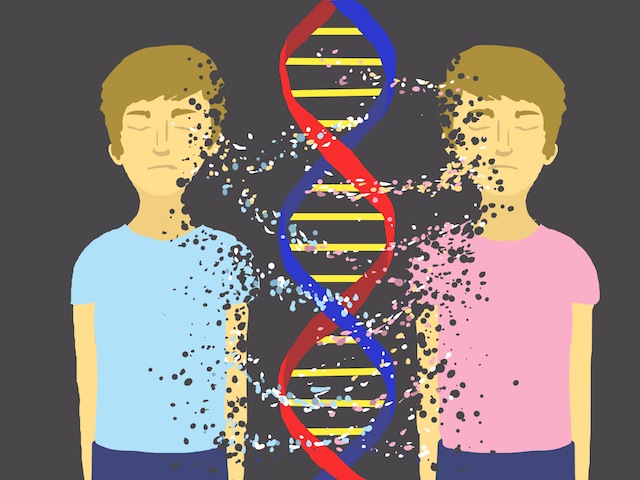Twins are a staple of film and literature, often used as a device to show two sides of the same character — a sort of alternate reality, where two people spent at least the first nine months of their existence together, but somehow ended up in vastly different situations. From Luke Skywalker and Princess Leia Organa of Star Wars to Michael and Garthe Knight of Knight Rider, it’s a familiar trope that’s rarely used anymore unless it’s ironically.
But far from just being useful for lazy writers, twins, particularly those separated at birth, are essential to uncovering the answer to the old nature-nurture debate: Are we just a product of our genes, or are we blank slates, the result of the unique environments and situations we’ve lived through?
But how similar are twins, exactly? Fraternal twins, the result of separate eggs and separate sperms, are no similar to each other, genetically, than any other siblings, sharing about half of their genes. And despite the name, identical twins are not exactly the same genetically, either.
Our DNA is very good at replicating itself without errors, but it’s also extraordinarily long — a book publishing an individual’s DNA would be roughly the length of 1000 copies of “War and Peace.” Due to DNA’s size, even a near perfect copying mechanism introduces some errors, more often referred to as mutations. For the most part, these mutations are neutral, however, if they occur at the wrong place, the result could be one twin developing cancer while the other does not.
There’s also the issue of gene expression. Genes sometimes remain silent, unless they’re triggered by something in the outside environment. Even two identical twins living in the same home with the same parents doesn’t have the same experiences and, as a result, one may have different active genes from her double.
But this is all nit-picking. At least genetically speaking, identical twins are very, very similar. For the sake of experiment, we can consider them identical people with differing environments — in the case those separated at birth, potentially very different environments.
So what have we found? That dividing things up into the binary of nature or nurture is much too simplistic.
For almost any given trait, if one twin has it, it’s more likely that the other twin has it if he’s identical rather than fraternal. But in almost no situation is it even remotely guaranteed, with genetic disorders being the exception. Various traits might be more common than others for identical twins, and there is a metric for estimating heritability, though its specific meaning isn’t completely straightforward.
A meta study published in 2004, for instance, provides the heritability of several traits: intelligence has a heritability of 88 percent around the age of 26, but only 22 percent at the age of 5. Major depression? 37 percent. Schizophrenia? 80 percent. Social conservatism has absolutely no measurable heritability for children, but is somewhere between 45 and 65 percent for adults. Religiousness in adults has a heritability of between 30 and 40 percent.
But what does that mean? Does it mean that 88 percent of intelligence is hereditary? If your parents were stupid, you should just throw in the towel and give up on your academic career?
Of course not. The fact of the matter is these are all things we don’t fully understand yet and are measures of averages rather than individuals. Looking at the wide spectrum of people, it looks like a large amount of people’s variation in intelligence can be accounted for with genetics. But no matter how good your genes are, if you grew up in an environment where you inhaled lead paint and watched hours of reality TV instead of doing your homework, you probably won’t live up to your full potential. Similarly, if your genes aren’t necessarily A+ material (whatever that may mean), but you’re surrounded by patient teachers who have encouraged you to work hard, who knows what you’re capable of?
The lesson we learn from twins is that our genes aren’t the whole story, but neither is our environment. There’s no book preordaining us to a future of success or failure. Even strongly genetic traits can be changed. Don’t like the color of your hair? Dye it. Feel too short? Wear insoles. Wish you had eyes like a cat? Novelty contacts. You don’t have control over your DNA or the way you were raised, but you do have control over you, so reach for the stars, work hard and don’t let anyone tell you what you are or aren’t capable of.
Follow Robert Starr on Twitter @robertkstarr















